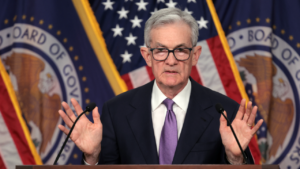Buy now, pay later (BNPL) apps and products quickly jumped on to the consumer lending scene and, within a few years, have become the standard for financing a purchase.
American retail and consumer spending habits have arguably changed forever as a result of the recent BNPL boom, as shoppers no longer need to use credit or save up for a big-ticket purchase.
With nearly every retailer offering this payment option through an app, in-store loan or credit card, it begs the question: how much further can this lending model grow and how has it already altered consumer spending trends?
Experts attribute rapid growth to convenience, lower costs
The growth of buy now, pay later transactions remains steady — the number of consumers using the tool has grown 40 percent within just two years, according to the Federal Reserve Bank of Boston’s 2024 report.
The report also found that BNPL spenders tend to be repeat customers.
“Similarly to credit card revolvers, BNPL users tend to repeat their behavior over time: 55 percent of consumers who used BNPL in 2023 had also used it in at least one of the preceding two years,” the report reads.
When compared to similar lending products, the buy now, pay later option can seem like a no-brainer for many when it comes to financing large purchases. “It’s a very low cost, generally free way to spread out your cash flow,” says Geoff Brown, Co-founder and CEO of Highline Technologies.
If you were to make a $400 purchase on a credit card and didn’t have the payment ready, you’d get hit with interest. Brown explains that the same scenario with a BNPL loan comes with less overall financial risk. “The penalty is that you can’t do any more shopping until you catch up,” he says. ” It’s a much softer consequence…and it’s just less risky from the consumer’s perspective.”
Younger adults, indebted consumers more likely to use BNPL plans
According to Bankrate’s Buy Now Pay Later survey, 56 percent of users say they’ve experienced at least one problem while using the service — with Gen Z the most likely to have said so. More specifically, 34 percent said that they spent more than they should have and 28 percent reported difficulty with returning or refunding an item.
Chad Willardson, Founder and Certified Financial Fiduciary at Pacific Capital, suggests that the rise of BNPL apps and loans among Gen Z and Millennials can be attributed to a number of factors, among them being “ease of use, instant approval, interest-free or low-interest financing, and the preference for flexible payment options.”
“The growth of e-commerce, targeted marketing, and reduced reliance on traditional credit products also contribute to the popularity of BNPL services among younger generations,” Willardson adds.
Trinity Owen, Founder and CEO of The Pay at Home Parent, advises Millenials and Gen Zers to holistically consider their finances before borrowing a BNPL loan. “I’ve seen firsthand the rise in popularity of buy now, pay later loans among millennials and Gen Z,” she writes.
“It’s easy for young adults to get caught in a cycle of debt that can have long-term consequences. It can negatively impact their credit scores and limit their ability to finance future purchases, such as a home or car,” she adds. Instead of relying on financing apps, Owen suggests that these age groups focus on building passive income streams and practice smart budgeting to achieve financial independence.
“As millennials and Gen Zs navigate the rapidly changing economy, it’s more important than ever for them to prioritize financial education and smart decision-making when it comes to their finances,” she concludes.
Frequent usage could lead to “overborrowing, financial instability”
With all of this attention has come mixed reviews; some experts claim that the BNPL lending model can be a positive shift for specific American consumers while others advise that shoppers avoid the products altogether.
Like most forms of consumer lending, there’s no black-and-white answer as to whether BNPL products are an asset or a liability to the lending space or general public. It’s primarily about how the consumer assesses the financial risk when using these apps and how they manage their payments.
“While these loans have become increasingly popular among consumers, there is a risk that they may lead to overborrowing and financial instability,” Edward Maslaveckas, Founder and CEO of Bud Financial says. “They can also offer greater flexibility in repayment terms which can be helpful for those who have irregular income or unexpected expenses.”
Like with credit cards, users need to understand the psychological implications of making purchases with future funds. If the funds aren’t there or available at the moment, it’s crucial the consumers understand what adding another monthly payment could mean for their budget.
Buy now, pay later growth expected to surpass current usage
Juniper Research estimates that due to macroeconomic factors, buy now, pay later spend will grow by 291 percent globally come 2027. The study predicts that the platform will reach $437 billion in 2027, driven by “escalating financial pressures from the rising cost of living.”
Experts agree that this trend isn’t slowing anytime soon. “I’d say it’s definitely something that’s gonna continue to grow,” Brown says when asked about BNPL’s pace over the next few years. “It’s just a very efficient tool for people to use from the lending side of things as well as the consumer side.”
Brown accredits the recent surge – and future growth – widely to providers’ recent behavior. “This is not brand new. This has been around for decades,” he says, referring to BNPL products. “But the degree that the BNPL providers have been able to bring down their costs…that kind of discount really goes a long way to expanding access to credit.”
“I don’t see BNPL financing slowing down,” says Nelly Rezny, SVP of Business Solutions Group – Americas, Temenos, echoing the thoughts of most experts. “New entrants from traditional banks to credit card providers to traditional banks to credit card providers and additional fintech companies have joined the growing BNPL phenomena.”
Why consumer spending trends may never look the same
The general pull toward these products and services is indicative of a drastic, potentially long-term shift in consumer behavior. Consumers no longer have to wait weeks or months to receive an online order; with just one click of a button, you could have your online purchase at your doorstep as soon as 1-2 business days.
Modern shopping conveniences have made waiting weeks for an online order an archaic notion, effectively changing the retail industry. The same goes for the consumer lending space. Buy now, pay later allows consumers to bypass the ‘saving-up period’ before a purchase and most apps don’t require a lengthy application process, like credit cards and personal loans do.
The ease and convenience of making a large purchase in four installments without walking into a bank is exactly what Gen Z and Millennial shoppers are looking for, says Maslaveckas.
“In our experience, many younger consumers are looking for alternative lending options that provide more transparency and flexibility than traditional banks. They want to be able to access credit quickly and easily, without having to navigate complex application processes or deal with high fees and interest rates,” he says.
However, as BNPL products continue to grow in popularity, Maslaveckas says that these loans can be a valuable tool for these consumers if used correctly. “Because having more choice as a consumer is always a good thing, as long as sufficient controls are in place to discourage bad actors.”
How borrowers can protect themselves
Consumers need to be more diligent than ever when reviewing the terms and conditions, says Sophoan Prak, personal advisor with Vanguard. From misleading disclosures to astronomical interest rates, these products can end up doing a lot more harm than good if not paid off in-full and on-time.
Prak advises that BNPL users fully understand the risks associated with these products before signing on the dotted line. “If consumers are making purchases that they can’t afford, it goes back to looking at your budget to figure out if it really is a sound purchase.”
“It [missing payments] can really impact your credit score and financial well being down the road if something unexpected happens. And from a planning perspective, I think people really need to be prepared for that.” In lieu of potential credit damage, she encourages consumers to carefully read the terms and conditions before accepting the offer to see if the provider charges interest or reports to credit bureaus.
Rather than jumping straight to financing, Prak echoes the sentiment of many financial professionals and encourages that borrowers take a beat to consider what their budget looks like. “[frequent BNPL usage] really can lead to behaviors that can be really hard to get out of once you’re in a debt cycle,” she says.
At the end of the day, a solid budget and plan is the best way to protect your future financial health. If this involves an installment loan, that’s not necessarily a bad thing. If you’re able to pay off all of the installments on-time and in-full and are careful not to overborrow, then it can be a great way to build your credit score, should the provider report your repayment history to the credit bureaus.
Read the full article here
















